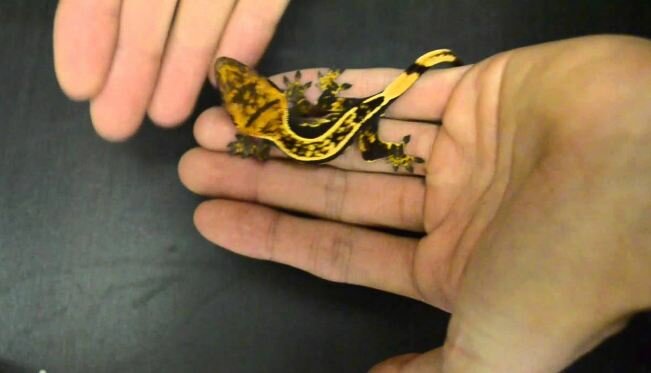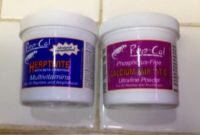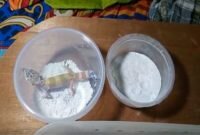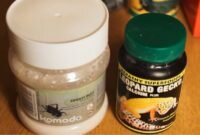Taking care of a pet indeed needs commitment. There are many efforts to do how to make the pets healthy, active, and able to stay survive longer. Of course, it is including leopard gecko. Leopard gecko is indeed a kind of reptile. But it doesn’t look scary or wild at all. Its size is tiny as well as the variants are available in many colors to make people may love to keep it at home. If you are interested to have it, there are some basic treatments of leopard gecko you should know. Check them out.
Prepare the House
Just before the gecko is coming, the house must be there. Fish aquarium is considered as the best house for this animal. However, if you think it is too expensive, you can use other stuff like plastic box. Make sure that the sizes are around 90x45x45 so that you can keep around 3 leopard geckos with a requirement not to put 2 male geckos since they must fight. Put some layers inside the house using paper, towel, and special carpet for reptile you can buy in the pet shop. Spread also special sand to let the gecko hide. Additional stuff to be used includes the pieces of pipes or bamboo. Meanwhile, don’t forget to buy bowls for foods and drinks. Make sure that all the accessories are safe for this animal.
Feed the Leopard Gecko
When the animal has been there, it is time for you to prepare the foods. Taking care of leopard gecko is not difficult anyway. it needs insects as the main menu. But you should not give them any big insects like small caterpillar or grasshopper. Since this animal is nocturnal, put the foods at night. Adult leopard gecko may eat around 10 insects per day. However, the babies must need less than that; only around 4-8 insects. The most important thing is to prepare water for them. If you want to give the geckos’ additional nutrition, the insects must be fed with nutritious foods like carrots and vegetables.
Keep Their Health
Leopard gecko is rarely being suffered from severe diseases. Their lifespan is up to 20 years and they have strong immune system. But if there are some signs that they have a certain disease, separate them from their friends. It is even better not to bring back them to the house for around a month. The most common disease is respiratory infection coming due to the environment condition that is dirty and too moist. The signs are that the gecko always opens its mouth and it feels hard to breathe. For the more severe condition, there is bubble from the nose.
Gecko often cut off its tail when it feels threatened. Besides, it is possible also that the tail is separated because if being bitten by another gecko. If yours experience this condition, separate them and then give them more foods and drinks. Don’t forget to prepare the house well with warm temperature. The house must be cleaned regularly since it becomes another factor of the gecko being suffered from the diseases.
Control the Temperature and Humidity
It is also an important thing to control the temperature and humidity of the cage. An ideal cage with the right temperature and humidity keeps your lovely leopard gecko healthy. In specific, you have to create a warm and a cool side on the cage. Let the gecko decides which one of the best places they want to visit. The ideal temperature for the warm area is around 85 to 95 degrees F or 29 to 35 degree C. On the other hand, you just need to low the temperature to set the cold area. Moreover, the humidity has to be around 10% to 30% range. To get the accurate level of humidity, just measure it with a hygrometer.
Create Lighting Installation
Leopard gecko likes to stay in a bright area. That’s why you also need to prepare a lighting installation in the cage. The light has to able to work up to 12 hours a day to meet the need of the gecko. By setting the lighting in the right way, your beloved leopard gecko will be happy and comfortable while spending their time in the cage. If they are happy, it increases their life expectancy.
Recognize the Habit
While taking care of them, just try to recognize their habit. Recognizing the habit helps you to differentiate whether the leopard gecko is in its healthy or unhealthy condition. For example, a healthy gecko loves to play or active during the daytime. On the other hand, an unhealthy gecko tends to hide all the time more than their playing time. A healthy gecko will have an ideal weight. They eat and drink normally. In contrast, just bring them to the vet if you see they don’t want to eat and even losing their weight drastically.
The Physical Appearance of a Healthy Leopard Gecko
A healthy gecko can be seen from their physical appearance. For instance, you can see it from the size. A healthy gecko baby is commonly 3 to 4 inches long whereas a female gecko is 7 to 8 inches long. The male gecko is longer around 8 to 10 inches long.
Consider the Lifespan
If you make them happy and take care of them well, it means you make the lifespan longer than the expectancy. Let say, a normal leopard gecko can live around 6 to 10 years and even reaches 20 years. By having a good treatment, the lifespan of the gecko can reach up to 27 years.
Best Substrates for the Cage
There are also several substrates you need to consider while preparing the cage for the leopard gecko. You may use newspaper, pea gravel, artificial turf, flat stones to cover the floor of the cage. Don’t fill the cage with too many accessories. Give a little bit free space around the corner of the cage. This free space will be used as a place to release their stool. It is also important to give sand in the cage because sometimes they need to eat it. But make sure that they don’t eat the sand too much because it triggers intestinal impaction disease. By creating a perfect cage with the best materials, you will see a bright, strong, and active leopard gecko at home.




